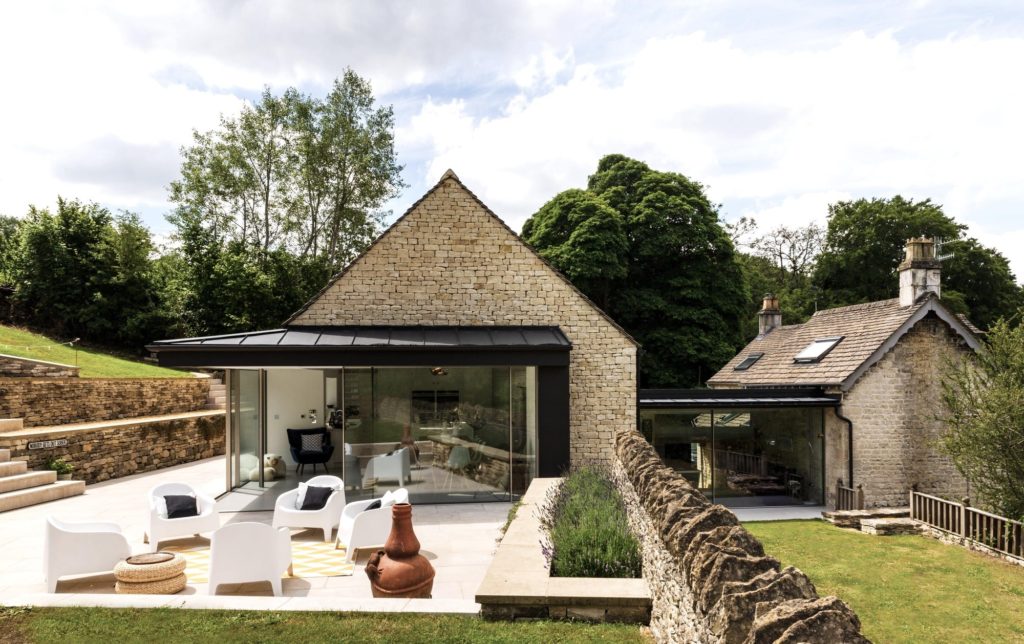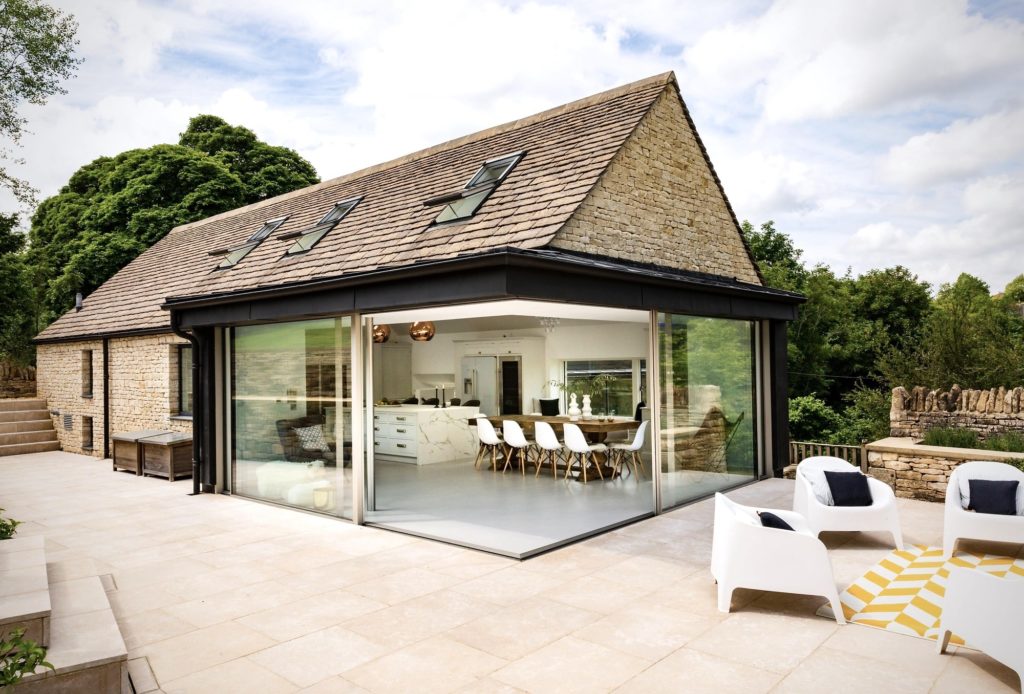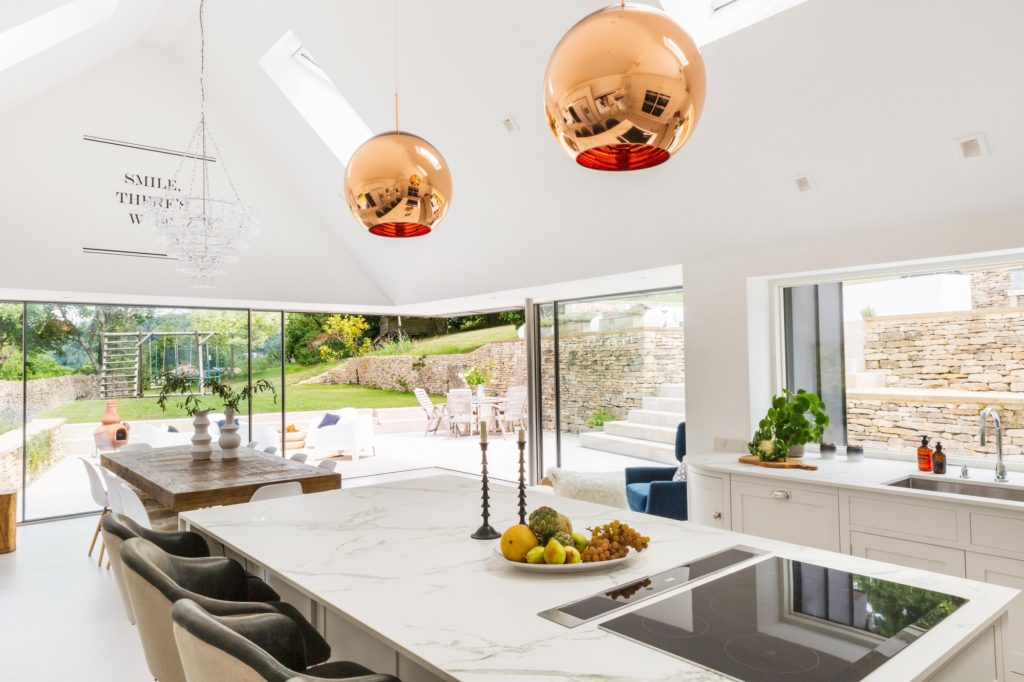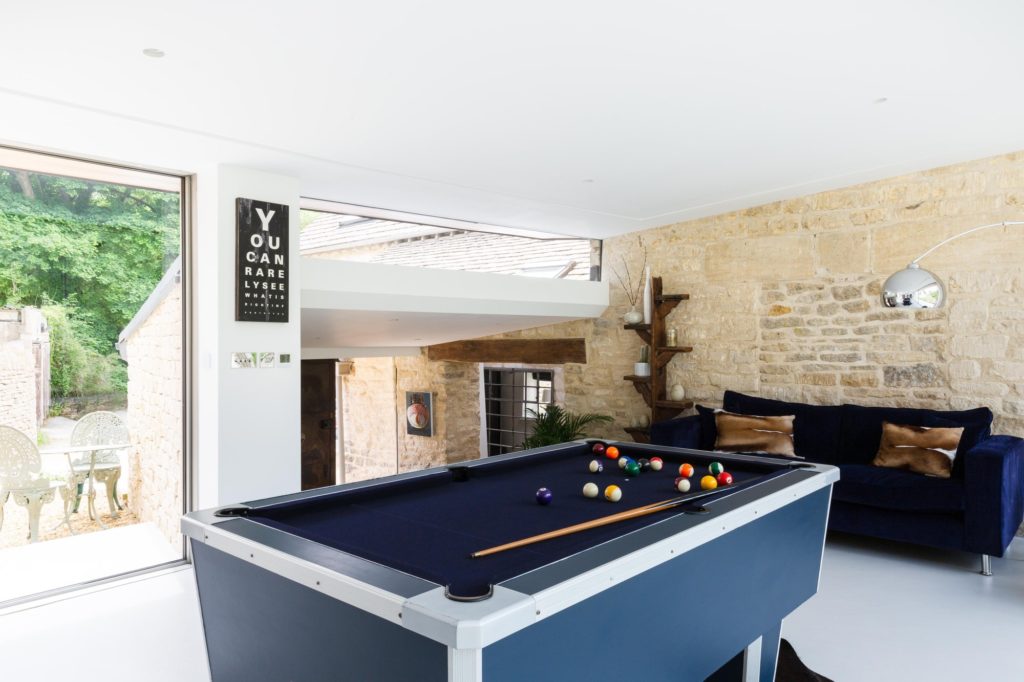When we’re showing our clients examples of previous projects, the ones that never fail to impress are the buildings featuring floating corners. There’s something about this visual illusion, in which the corner of the building appears to ‘float’, that always captures the imagination. And with the addition of slimline sliding glass doors, the wow factor is amplified when the doors are slid back to open up the space to the garden.
In this blog post, we decided to dig deep into this magical architectural detail and look at the main points to consider when thinking about incorporating floating corners in your extension or garden room.

A floating corner, in an architectural context, is a section of roof which appears to ‘float’ without any visible support or structure. The hidden support lies in a cantilevered steel lintel which is inserted in the structure to support the corner without the use of a conventional pillar. When this technique is teamed with large glazed doors, it creates a feeling of spaciousness and openness which lends itself brilliantly to indoor-outdoor living.

There’s an undeniable wow factor when it comes to floating corners. As you’ll see in this stunning Minima Sliding example below, floating corners create a seamless and highly stylish link between home and garden. There’s something incredibly impressive about pulling back a set of glazed doors to reveal the open, pillarless corner of a building. It creates the ultimate entertaining space in which the inside and outside living spaces merge as one.

Creating a floating corner is likely to be more costly than opting for a traditional build because the steels which support the structure have to be cantilevered. This will most likely involve the services of a structural engineer as well as an architect to plan and execute the design, and the materials required may also add to the cost.
When it comes to the choice of glazing to encapsulate your floating corner, it’s important to choose a supplier who can provide a combination of fixed and moving panes, according to your needs. At Minima Sliding, we use a flush threshold modular track system which allows multiple panes to slide back alongside one another to create the biggest possible opening for your floating corner.
We also use stainless steel rollers which are attached to the bottom of each door panel rather than being embedded in the track. This means that the sliding mechanism is effortlessly smooth, the rollers remain free of dust and debris, and they are highly durable.
For the ultimate wow factor, you might like to consider combining floating corners with pocket doors on either side. This approach has been brilliant executed at our stunning Boathouse project in which the whole of the downstairs living space effectively becomes part of the garden when the doors are drawn back.


Thinking about installing a floating corner? Get in touch to have a chat about your specific requirements.